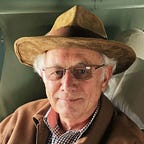“A Most Extraordinary Mountain”
Why “Vancouver Pinnacles” turned out not to be in Pinnacles National Park
Story and photographs by David Laws
On a horseback ride inland from Monterey, the Spanish colonial capital of Alta California, in 1793, English maritime explorer Captain George Vancouver came across “the sight of the most extraordinary mountain.” His report of an imposing cliff face eroded into tall columns helped to establish today’s Pinnacles National Park. But in a twist of incorrect identification was actually located more than 50 miles away.
He described the mountain in his multi-volume book, A Voyage of Discovery to the North Pacific Ocean and Round the World, as appearing like a “sumptuous edifice fallen into decay.” A drawing by midshipman and expedition artist John Sykes is captioned “Remarkable Mountain near the River of Monterrey.”
A 1903 Sunset magazine article incorrectly claimed that Vancouver's “extraordinary mountain” was located in today’s Pinnacles National Park east of Soledad, California. Images of rocky spires called Vancouver Pinnacles were presented in early efforts to establish the site as a national monument that was raised to the status of a park in 2013.
In the 1950s, the location visited by Vancouver and shown in Sykes’s illustration was correctly identified to be 50 miles west of Pinnacles, near the entrance to the valley of Corral de Tierra off Highway 68 near Salinas. The eroded escarpment is known today as Castle Rock for its resemblance to a fortified medieval castle.
The towers and turrets reminiscent of King Arthur’s Camelot fascinated a young John Steinbeck who had been captivated by the tales of King Arthur and the Knights of the Round Table since he was nine years old. Although the illusion of a great citadel evaporated when the author and his sister Beth approached close to the ramparts on their horses, his fascination with the setting remained.
The setting forms the backdrop for several Steinbeck stories, including his first California novel, The Pastures of Heaven (1932). In the short story “The Murder,” anthologized in The Long Valley (1938), the writer describes the scene: “At the head of the canyon there stands a tremendous stone castle, buttressed and towered like those strongholds the Crusaders put up in the paths of their conquests. Only a close visit to the castle shows it to be a strange accident of time and water and erosion working on soft, stratified sandstone.”
The closest access to the escarpment is inside the private, gated residential development of Markham Ranch, but Castle Rock is visible to the public from Corral de Tierra Road.
If You Go
What: Castle Rock, a curiously eroded escarpment
Where: East of the gated residential development of Markham Ranch, south of Salinas, California
Coordinates: 36.5598, -121.7172
Cost: Free to view from Corral de Tierra Road.
Pro Tip: Enclosed by steep chaparral-covered ridges, the protected valley offers a bucolic rural drive past trophy houses, ranches, and vineyards.
Story and photos based on the vignette “A MOST EXTRAORDINARY MOUNTAIN” published on pages 174 -175 of Secret Monterey: A Guide to the Weird, Wonderful, and Obscure by David Laws, Reedy Press, LLC (2022).
